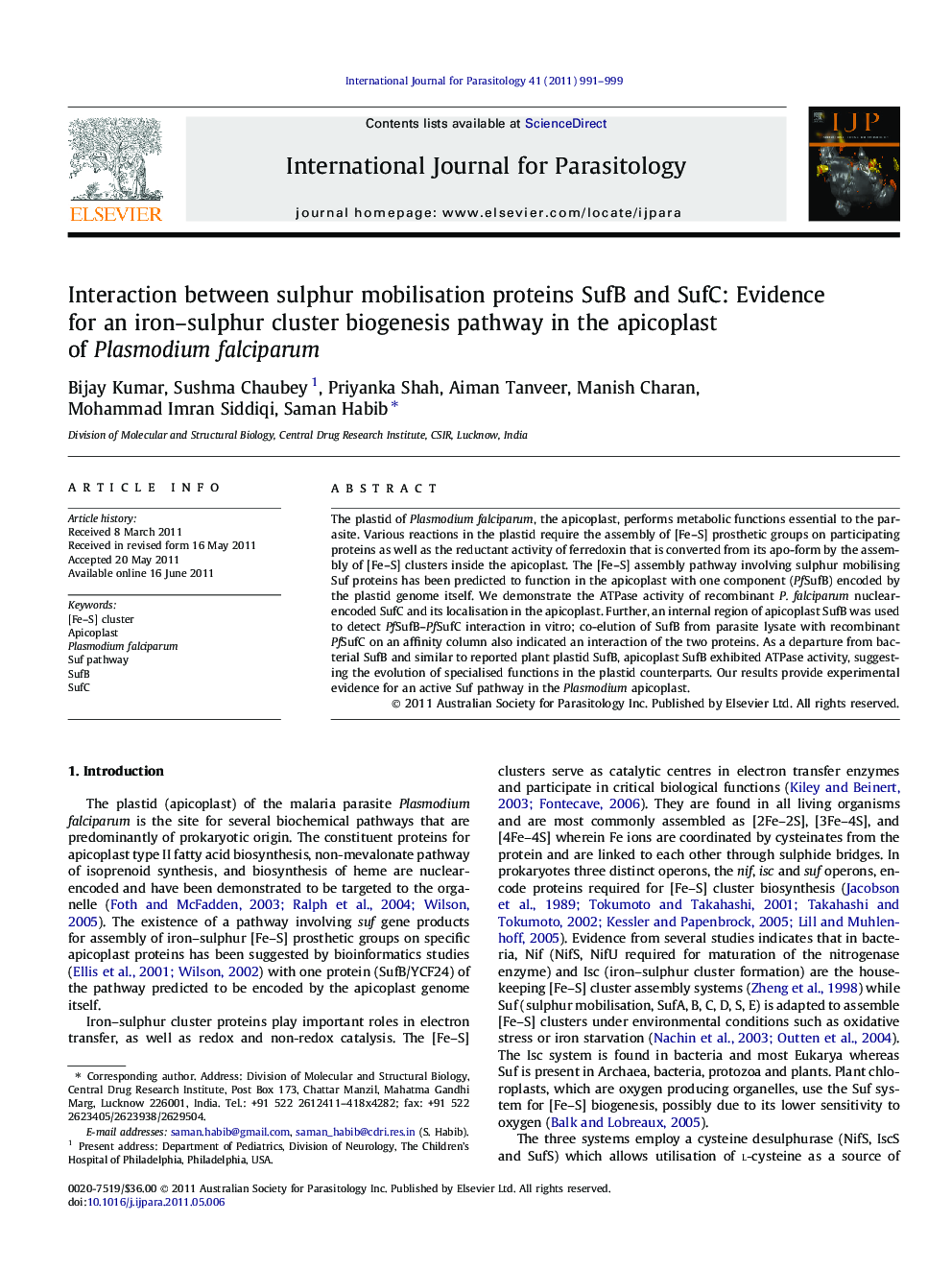| Article ID | Journal | Published Year | Pages | File Type |
|---|---|---|---|---|
| 2436177 | International Journal for Parasitology | 2011 | 9 Pages |
The plastid of Plasmodium falciparum, the apicoplast, performs metabolic functions essential to the parasite. Various reactions in the plastid require the assembly of [Fe–S] prosthetic groups on participating proteins as well as the reductant activity of ferredoxin that is converted from its apo-form by the assembly of [Fe–S] clusters inside the apicoplast. The [Fe–S] assembly pathway involving sulphur mobilising Suf proteins has been predicted to function in the apicoplast with one component (PfSufB) encoded by the plastid genome itself. We demonstrate the ATPase activity of recombinant P. falciparum nuclear-encoded SufC and its localisation in the apicoplast. Further, an internal region of apicoplast SufB was used to detect PfSufB–PfSufC interaction in vitro; co-elution of SufB from parasite lysate with recombinant PfSufC on an affinity column also indicated an interaction of the two proteins. As a departure from bacterial SufB and similar to reported plant plastid SufB, apicoplast SufB exhibited ATPase activity, suggesting the evolution of specialised functions in the plastid counterparts. Our results provide experimental evidence for an active Suf pathway in the Plasmodium apicoplast.
Graphical abstractFigure optionsDownload full-size imageDownload high-quality image (43 K)Download as PowerPoint slide
